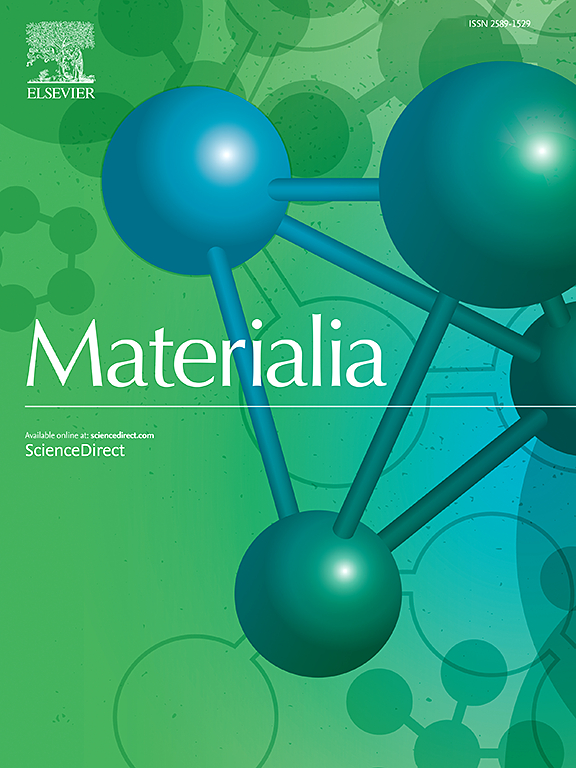低碳钢中产生三峰组织的新工艺
IF 3
Q2 MATERIALS SCIENCE, MULTIDISCIPLINARY
引用次数: 0
摘要
在本研究中,提出了一种新的技术(临界间退火、控制冷却、冷轧和最终退火)来产生低碳钢的三峰组织。在临界间退火后,采用30℃/s的冷却速率,导致铁素体、马氏体和珠光体相同时形成。经过冷轧(25%、50%和75%应变)和550℃最终退火后,25% +550和50% +550试样的组织尚未发生再结晶,而75% +550试样的组织已经完全发生了静态再结晶。75% +550试样形成了由粗晶(大于5 μm)、细晶(1 ~ 5 μm)和超细晶(小于1 μm)组成的三模态微观结构。75% +550退火后的板材硬度最高(217.5 HV),屈服强度最高(686.1 MPa),抗拉强度最高(709.5 MPa),总伸长率最高(11.3%),主要是由于形成了三峰组织和细小的球形θ-Fe3C颗粒。通过增加应变(在变形和退火样品中),中心区域变小,表明向剪切韧性断裂转变。在550℃的最终退火中,由于恢复机制的出现,中心面积略有增加。本文章由计算机程序翻译,如有差异,请以英文原文为准。

A novel technique to produce trimodal microstructure in low-carbon steel
In this research, a novel technique (intercritical annealing, controlled cooling, cold rolling, and final annealing) to produce trimodal microstructure in low-carbon steel is proposed. After intercritical annealing, a cooling rate was used (30 °C/s) which led to the simultaneous formation of ferrite, martensite, and pearlite phases. After cold rolling (with the strains of 25 %, 50 %, and 75 %) and final annealing at 550 °C, recrystallization had not yet occurred in the microstructure of the 25 %+550 and 50 %+550 samples, while the microstructure of the 75 %+550 sample had completely undergone static recrystallization. A trimodal microstructure consisting of coarse grains (larger than 5 μm), fine grains (between 1 and 5 μm), and ultrafine grains (less than 1 μm) was formed in the 75 %+550 sample. Among the annealed sheets, the 75 %+550 sheet exhibited the highest hardness (217.5 HV), yield strength (686.1 MPa), and tensile strength (709.5 MPa), with an acceptable total elongation (11.3 %) due to the formation of trimodal microstructure and fine spherical θ-Fe3C particles. By increasing the strain (in both deformed and annealed samples), the central area became smaller, indicating a shift toward shear ductile fracture. The final annealing at 550 °C slightly increased the central area owing to the occurrence of restoration mechanisms.
求助全文
通过发布文献求助,成功后即可免费获取论文全文。
去求助
来源期刊

Materialia
MATERIALS SCIENCE, MULTIDISCIPLINARY-
CiteScore
6.40
自引率
2.90%
发文量
345
审稿时长
36 days
期刊介绍:
Materialia is a multidisciplinary journal of materials science and engineering that publishes original peer-reviewed research articles. Articles in Materialia advance the understanding of the relationship between processing, structure, property, and function of materials.
Materialia publishes full-length research articles, review articles, and letters (short communications). In addition to receiving direct submissions, Materialia also accepts transfers from Acta Materialia, Inc. partner journals. Materialia offers authors the choice to publish on an open access model (with author fee), or on a subscription model (with no author fee).
 求助内容:
求助内容: 应助结果提醒方式:
应助结果提醒方式:


